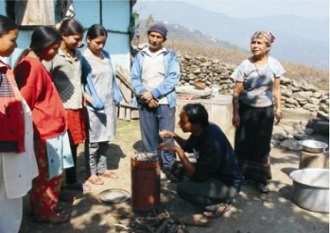NEW YORK (Reuters Health) – While some studies have implicated gas appliances in children’s risk of respiratory ills, a new report suggests that gas cooking stoves may have only a small effect on most children’s lung function.
Studies over the years have come to conflicting conclusions as to whether gas stoves affect children’s lung function. But some research has suggested that the appliances can worsen existing asthma, or possibly raise children’s risks of developing asthma, allergies or other respiratory ills.
Gas appliances, particularly when not properly ventilated, can release nitrogen dioxide into the home. Nitrogen dioxide is a pollutant produced by fuel-burning appliances that is known to irritate the airways and eyes.
In the new study, published in the European Respiratory Journal, researchers analyzed data on 24,000 children ages 6 to 12 from Canada, the U.S. and seven European countries. All had undergone standard lung function tests, and their parents had answered questions on various exposures, including their use of gas stoves.
Overall, the study found only small average differences in lung function between the 41 percent of children from homes with gas stoves and the 58 percent from homes with electric stoves.
On two measures of lung function — FEV1 and FVC, which gauge the volume of air a person can forcibly exhale — children in gas-cooking homes had a less than 1 percent reduction compared with their peers.
“Frankly, the effects were not very strong,” lead researcher Dr. Hanns Moshammer, of the Medical University of Vienna in Austria, told Reuters Health in an email.
In an earlier study of Austrian children, Moshammer and colleagues had linked more-significant effects to gas-stove exposure. According to Moshammer, those differences in lung function would not have been enough to cause breathing problems in children.
However, he noted, they raised the possibility that gas stoves were creating early damage in the small airways deep in the lungs of some children. “If this effect is a sign of an initiation of a remodeling process in the lung tissue,” Moshammer said, “it still requires further investigation.”
The current study, based on a much larger, international sample, failed to reproduce the findings from the Austrian study. It did find, however, that gas-stove exposure seemed to have somewhat stronger effects on lung function in children with allergies to airborne substances. But Moshammer pointed out that the finding was based on a fairly small number of children, so it is “not very certain.”
The bottom line, according to the researcher, is that “there is no reason to abandon gas stoves.”
He added, however, that parents should be sure to properly ventilate their kitchens, particularly if their children have allergies or asthma. Experts recommend that same precautionary measure with all fuel-burning appliances in the home.
European Respiratory Journal, online December 23, 2009.
source – http://www.reuters.com/article/idUSTRE6063WG20100107




